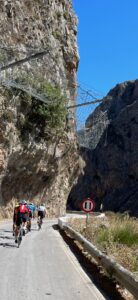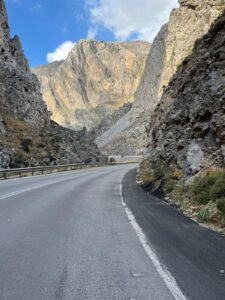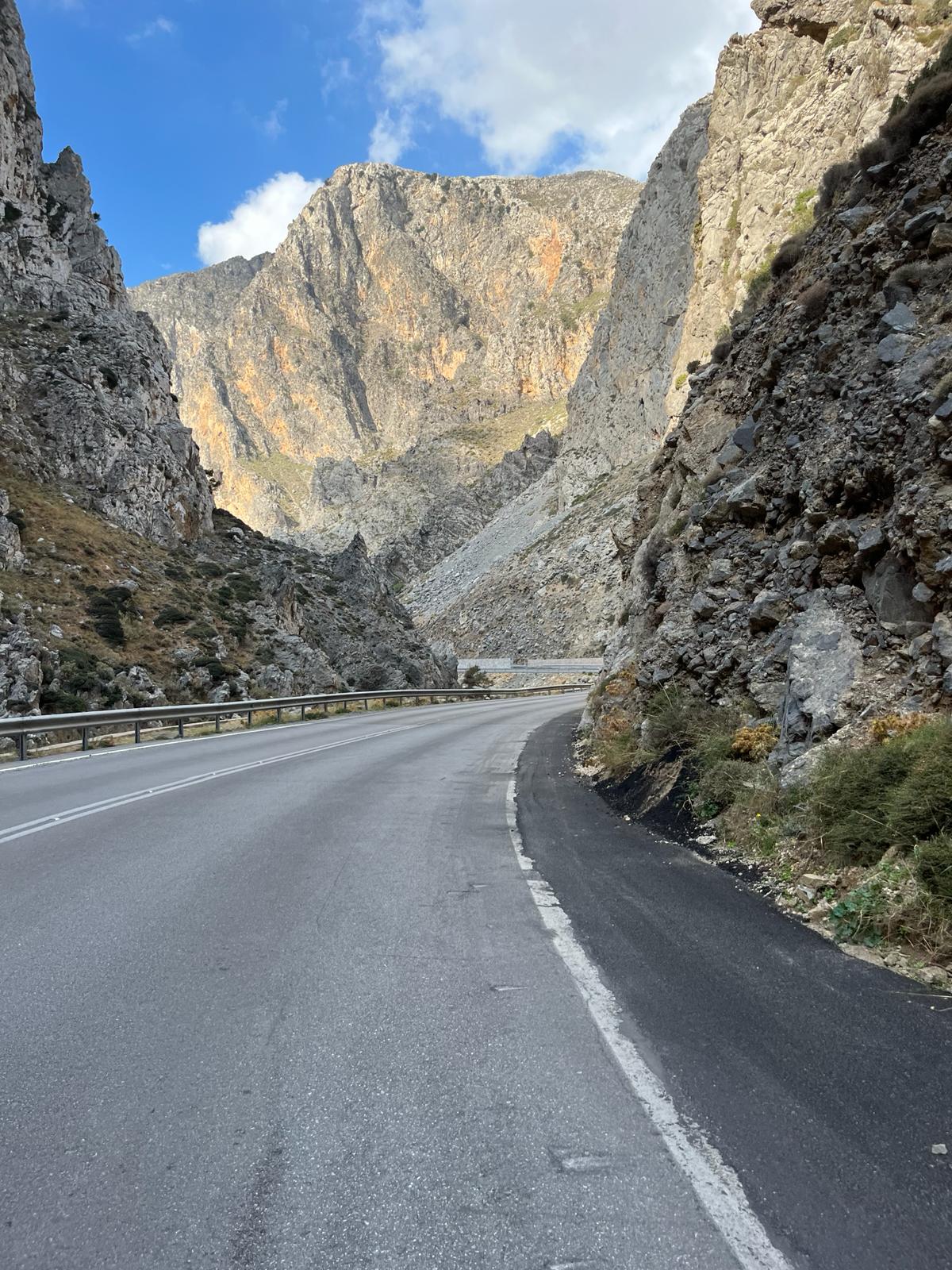Guest blog post by Paul Brinkmann
I visited Crete the last two Septembers after having spent the previous month in northern Italy road riding every day. Arriving in Crete, I naturally had high expectations with regard to the swimming, beaches, history, local wines, and culinary experiences but few expectations with regard to the road cycling community and terrain. Thanks to “Cretan Wild,” we stayed in the town of Chania, received invaluable information and introductions and after only a few days, all of my expectations were far exceeded.

First and foremost, open water swimming in the Mediterranean is quite a treat. There are various shades of turquoise and green water, good visibility, saltwater buoyancy, and water temperatures around 26 degrees Celsius. There are also fabulous coastlines with sand beaches, rock outcroppings, coves, and no deadly sharks to speak of, ranking this as my most favorite swimming venue in the world.

What was most impressive about the road cycling was the number of riders (male and female of all ages), the caliber and talent of all of the riders, and the terrain.

With regard to the terrain, the congested urban areas presented some challenges, but I never encountered any super aggressive motorists honking or losing their cool like I regularly experience in the U.S. Once outside of the urban areas and off the coastal roads, I was amazed at the little or no traffic I encountered on roads that meandered through olive orchards, vineyards, and other agricultural areas. Although generally desolate, I always felt confident that there was always a village with a taverna, market, and/or water fountain of some kind so water and nutrition were never an issue.

And on one day in the mountains when we were low on water and without a taverna on the horizon, my riding partner who lives in Chania, simply knocked on a stranger’s door and we were treated to cold water and a bowl of grapes from their back yard (do not try this at home).

It is also important to note that the wide variety of terrain includes roads going from sea level to 800+ meters and inclines ranging from normal and consistent 4-5% gradients to some ramps hitting 15% plus. The island is mostly mountainous with a number of summits over 2,000 meters.


There are spectacular views all around, including overlooking the colors of the Mediterranean Sea and riding alongside gorges. That being said, focus is required because generally speaking, it’s “black diamond” terrain with blind corners, livestock, and other animals (and especially goats) in the middle of the roads, tourists in rental cars, potholes, and other dicey surface conditions, as well as construction hazards of all kinds anywhere and at any time, and with limited, if any, warnings.

The cycling community is strong and thriving. Chania has a population of over 110,000 people and there are several bike shops and two cycling teams, Talos and Kydon, which I had the privilege of meeting up with for a few group rides. Both teams have organized rides several days per week and include male and female riders of all ages with young kids and geezers like me. All of the diverse age groups included super talent that could push the big watts or climb mountains like the goats that inhabit those mountains. The locals also include an Olympian, Polychronis Tzortzakis, several successful track cyclists and age-group national champions.

After spending time riding in Crete with the locals, I immediately re-booked it again for this year and look forward to returning again and again and watching these kids work their way up into the world tour pro peloton.

Paul Brinkmann (64) from Flagstaff, AZ competed in running, cycling and triathlons over a 35-year span from 1984 through 2019 which included a number of triathlon national and world championship events from the sprint to IM distances in the US, Canada, London, Hamburg, Budapest, Kona, and Australia and still maintains a multi-sport lifestyle focusing on cycling, swimming, and alpine skiing.



